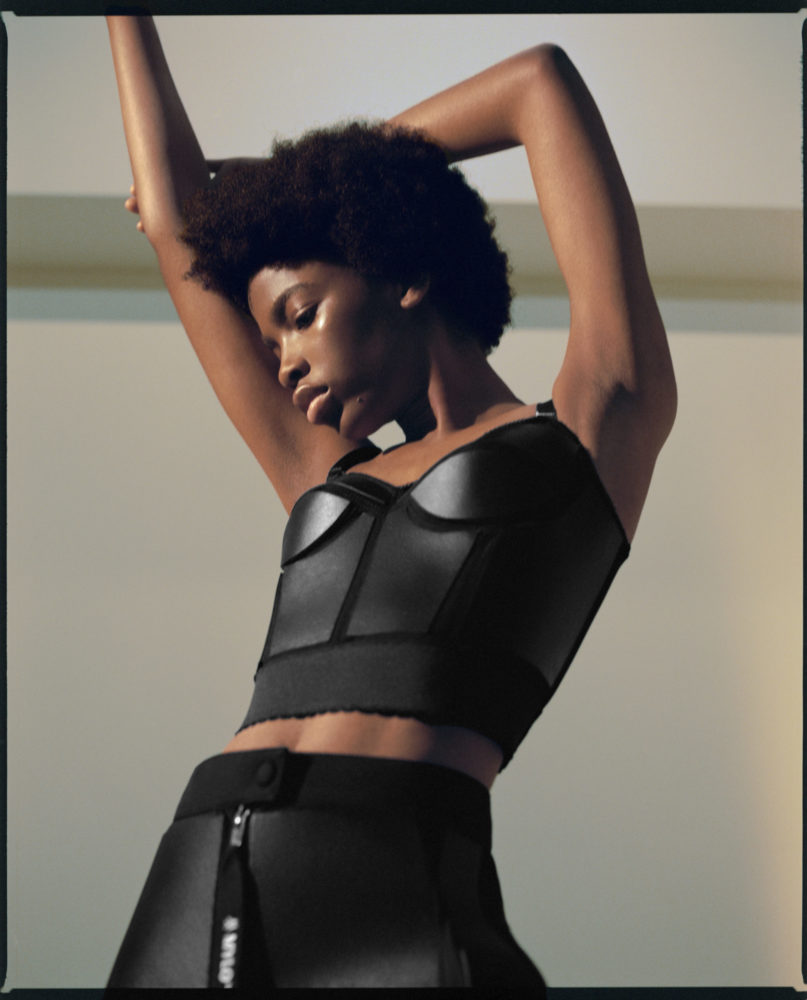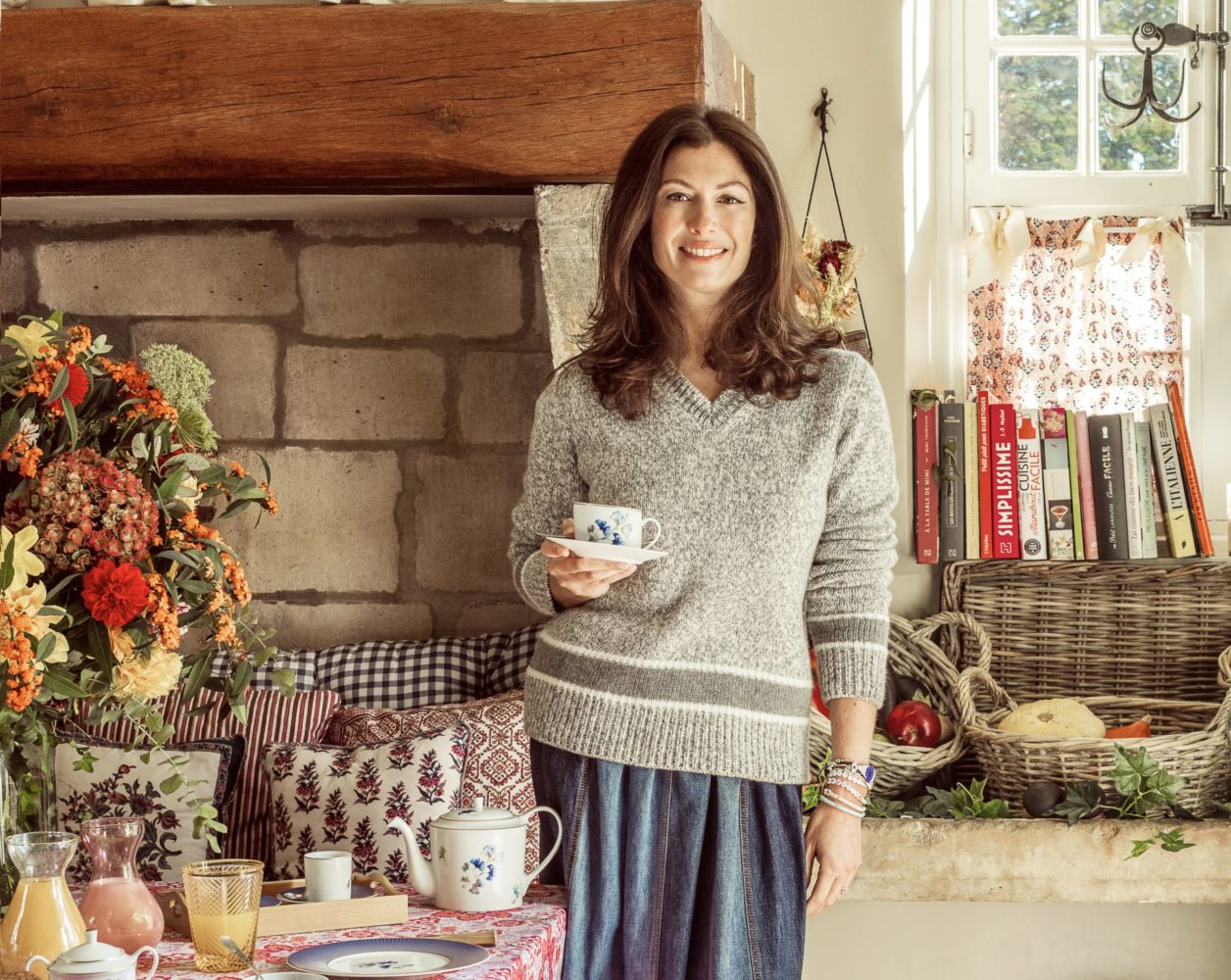Since 2016, Thebe Magugu has created collections that visually tell the stories of his native South Africa, highlighting its people’s history, traditions, beauty, and evolution. The 27-year-old fashion designer collaborates with local artists, craftspeople, and change-makers to infuse his garments and accessories with materials, adornments, and colors shaped by their culture and history. In fairness, Magugu also shares a percentage of profits from these pieces with those that collaboratively create alongside him, striking a balance between inspiration and ownership.
Each season, Magugu takes an educational approach to his collections, bringing his audience on a journey of discovery dotted with photographs and required reading. The LVMH Prize–winning designer also has a publishing arm,Faculty Press, which dives into the details of each and communicates the prodigious human experience.
For his Fall/Winter 2021 collection, “Alchemy,” Magugu was inspired by the nontraditional ways in which people got centered in isolation. Whitewall spoke with him about creating this season’s ensembles, the importance of giving back, and finding purpose in fashion.
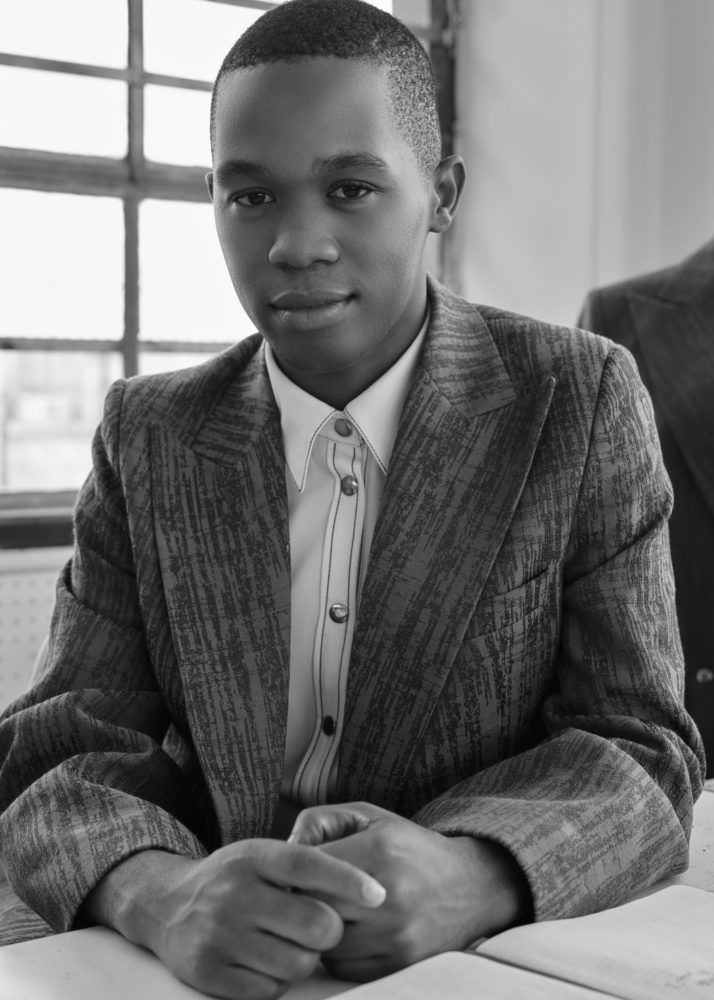
Portrait courtesy of Thebe Magugu.
WHITEWALL: When you started your brand, what did you want it to reflect?
THEBE MAGUGU: When I founded the brand in 2016, I was at the height of that appreciation of my culture and history and heritage. I wanted it to reflect that in a lot of ways and be an encyclopedia of key moments, histories, or people that otherwise run the risk of being forgotten if they aren’t spotlighted. And because I’m from a tribe most known for their beadwork and their storytelling, I like to think I continue that tradition through the work I do in fashion.
WW: How does your Fall/Winter 2021 collection, “Alchemy,” speak to that?
TM: When I started to think about “Alchemy” and this idea of deeper connection, I was having a very difficult time with lockdown. It wreaked a lot of havoc on me mentally. “Alchemy” was a way of discovering people who were trying to recenter themselves through non-Western mediums, like the traditional healers we have here in South Africa.
One of them was a very good friend of mine, Noentla Khumalo, who worked with me on the collection. She had to go into isolation for six months into the wild and learn how to become a traditional healer by other traditional healers. She loves her modern life—she’s a stylist who lives in the city—but she’s also had to accept this indigenous side to her. I think that’s where the collection started, in a lot of ways—this idea of merging the modern and the indigenous together into a collection.
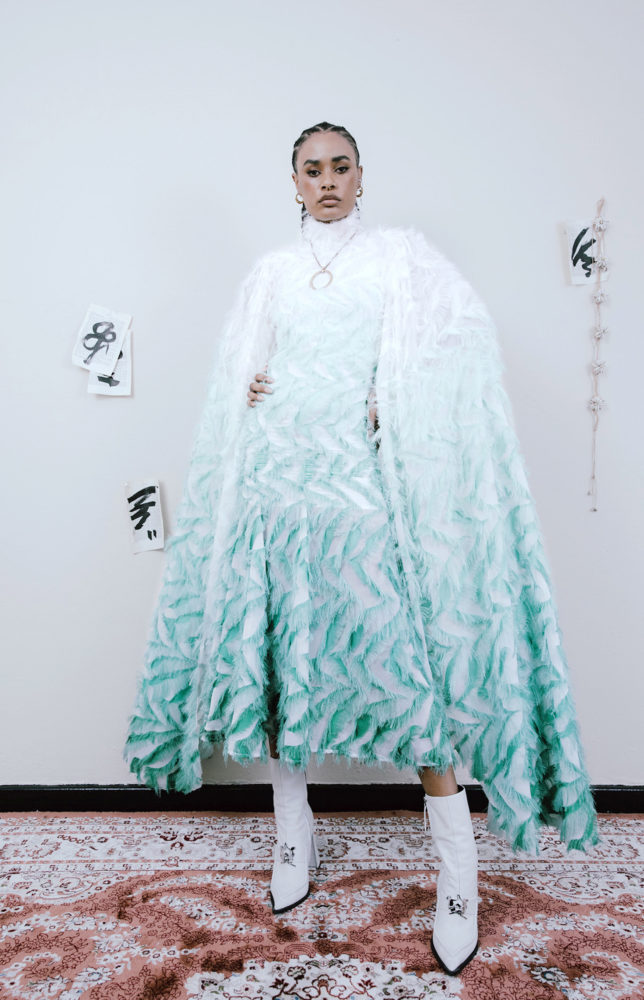
Fall/Winter 2021 “Alchemy” collection, courtesy of Thebe Magugu.
WW: Some of the prints Khumalo created were by photographing bones, which are her spiritual mediums, and applying those images to garments. Can you tell us about your collaborative process?
TM: I proposed that we work on a collaborative print, so she came to my studio and rolled open her mat and threw these bones down. Before we began, she asked her ancestors, “What’s next?” because you can’t just throw bones down; there has to be intention. She was about to tell me
what they said, but I stopped her. I told her I thought whoever gets to wear that garment, I’d want them to interpret the bones, and what they say, for themselves. They can have their own interpretation. I photographed the result, played around with the scale, introduced a few colors, and then printed it across various fabrics.
Collaboration is very important, and fair collaboration as well. With Noentla, I thought it was very important for her to have some sort of ownership over the print, so with every sale of the garment, she gets a certain percentage. We’ve long gone past telling people it’s for exposure.
I also worked with another traditional healer named Larisa Don, who burns this plant called imphepho that acts like a gateway in a lot of ways. We thought it would be interesting to transfer the plant shapes and the colors transfer onto the fabric. The result was beautiful—floral, chartreuse yellows and greens and browns.
WW: The subject matter of “Alchemy” has a hand-touched quality to it. What other textiles in “Alchemy” communicated South Africa’s complex history?
TM: One of my favorite pieces references scarification on certain tribes that they have on their backs. I worked with BYBORRE, a textile company in the Netherlands, to create a jacket that has grooves and pits on its back that mimic the scarification of certain tribes here that mimic animal skins, like crocodiles. I sent them the artwork and they imposed it onto the back. What’s special about it is the grooves double as Braille for one of my favorite African proverbs that says, “What you do for your ancestors, your children will do unto you.” Because of the subject matter of the collection, I thought it was the perfect time to introduce that quote into the collection because it’s so relevant.
WW: Customers are gravitating more and more toward storytelling and transparency, especially when it comes to how the garment was made. How does your partnership with the app Verisium lean into this?
TM: On labels of certain garments, if you tap your phone on the label, it gives you the collection like a look book, telling the story of where this collection conceptually stems from. It shows you pictures of the artisans or tailors in my studio who sewed that particular garment. There are pictures of Blessing, Max, Florence, and Bernard, and it shows the fabric’s provenance as well, like where it was sourced from or created. There’s even phone numbers. Transparency, now more than ever, is critical.
With the collections, because I draw so much from the people around me and the people in my communities, I have to strike a balance. Because I take inspiration, I have to counter that with giving back in a lot of ways. That’s why I choose to have all the production of the ready-to-wear, of the brand in general, be done by the very people who inspired it—the local communities and the people here—so there’s balance.
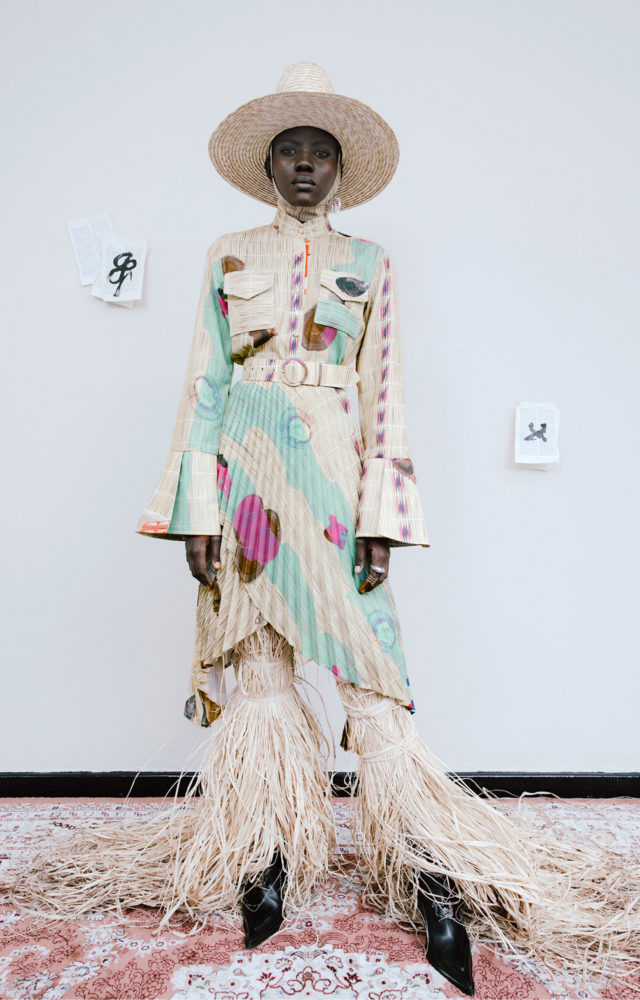
Fall/Winter 2021 “Alchemy” collection, courtesy of Thebe Magugu.
WW: In addition to each collection, you publish a newspaper under the brand’s publishing arm named Faculty Press, which informs the public on the topics your collections are rooted in, among others. Recently it was co-published by the Daily Maverick with over 20 journalists. What is the importance of this?
TM: If the brand is a sort of university with all these subjects, Faculty Press is a yearbook that encapsulates all of that. I’ve always felt like there are so many people here in South Africa who are unbelievably talented that don’t necessarily have the visibility that they deserve. With Faculty Press, it’s almost like bringing along everyone else with me.
If I’m afforded a foot in the door, I’d want other people to be able to come with me. Faculty Press is about other people. If you see the original Faculty Press and the subsequent publications that come from that, I don’t have any of my own campaigns; it’s just my editor’s note about the edition. It’s really a spotlight for other people that I feel like really need to be seen right now and are doing really relevant work. I also wanted to reflect people who are carving out a new vision of what it means to be a creative in South Africa.
As much as I think fashion is an escape for a lot of people, as it should be now more than ever, it also has to reflect what is happening. That’s when fashion is at its most powerful.
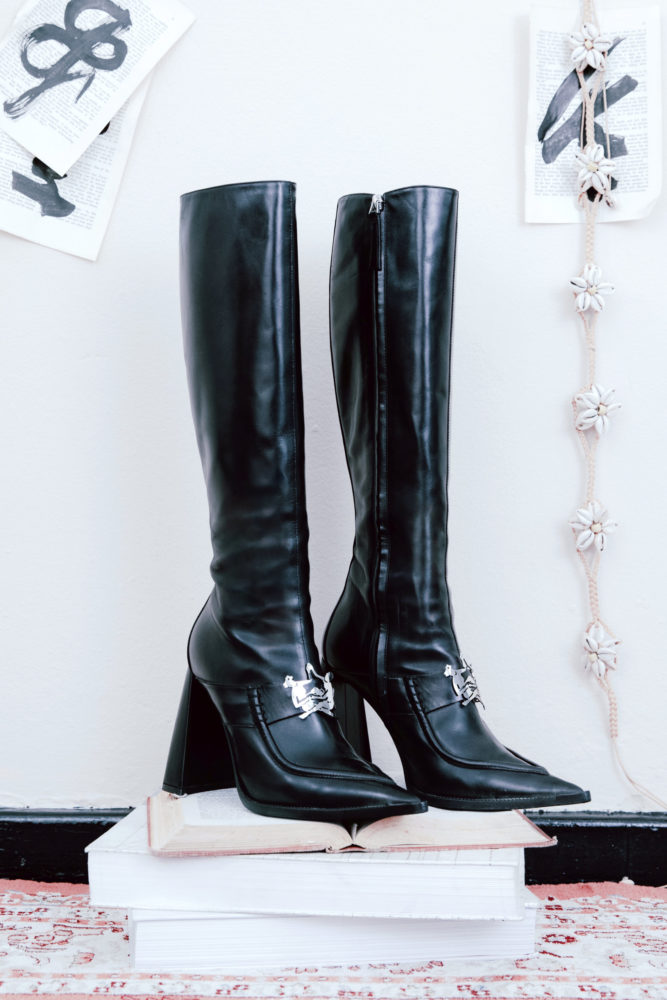
Fall/Winter 2021 “Alchemy” collection, courtesy of Thebe Magugu.
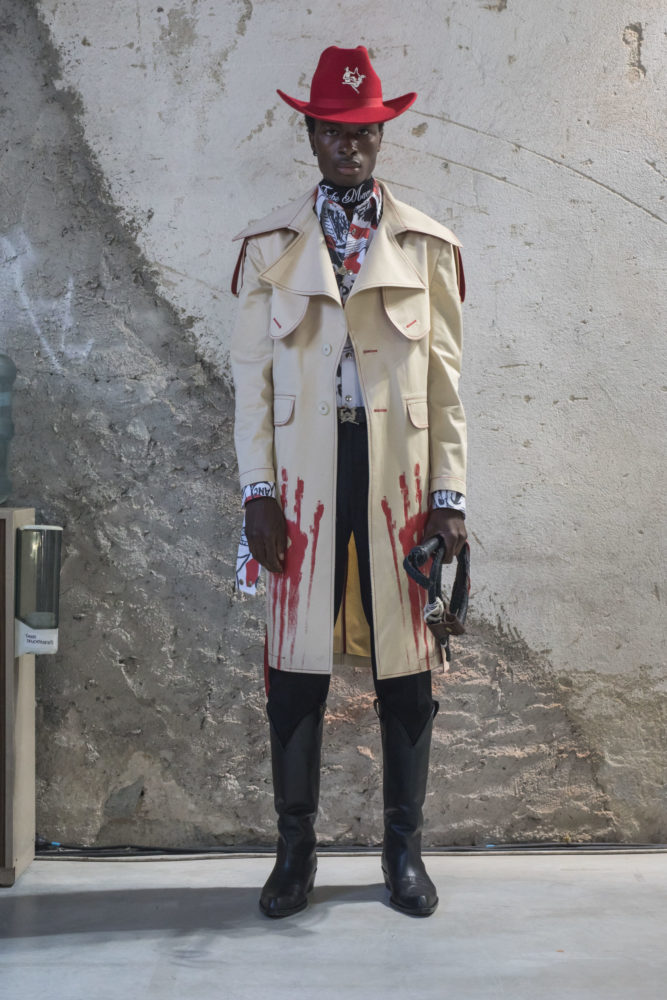
Spring/Summer 2022 “Doublethink” collection, courtesy of Thebe Magugu.
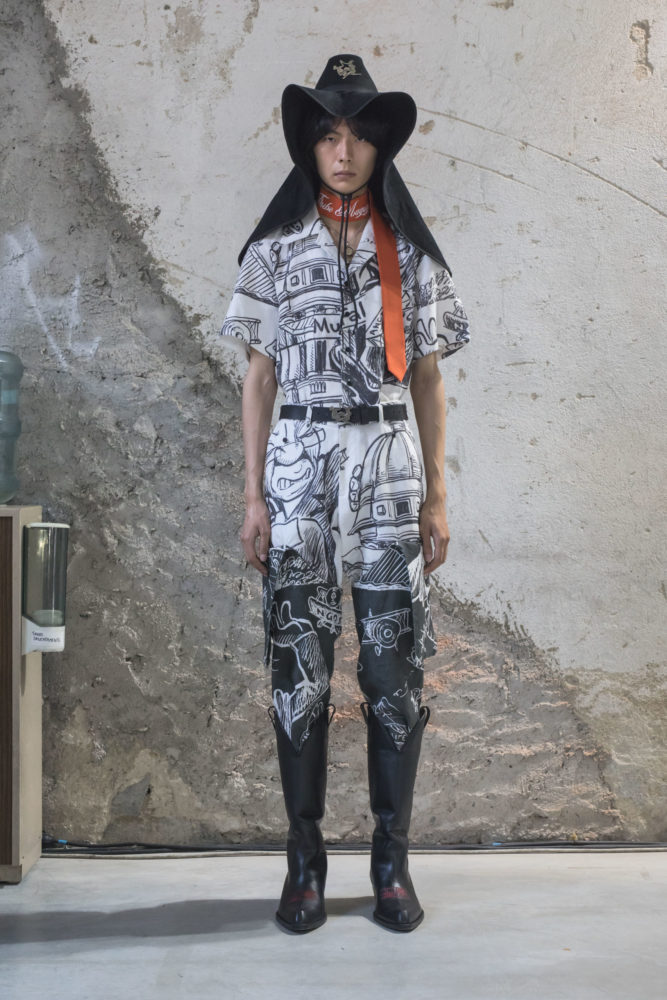
Spring/Summer 2022 “Doublethink” collection, courtesy of Thebe Magugu.





